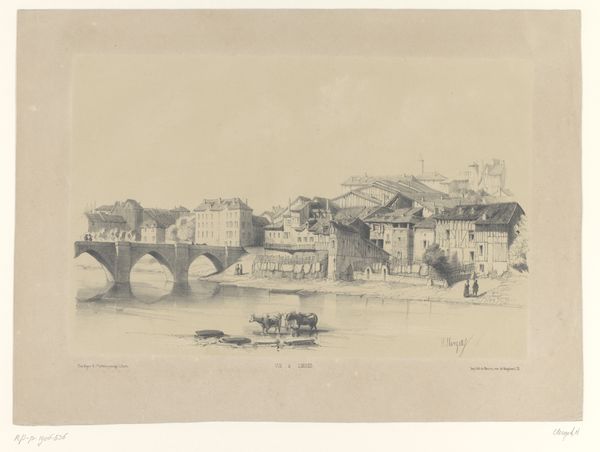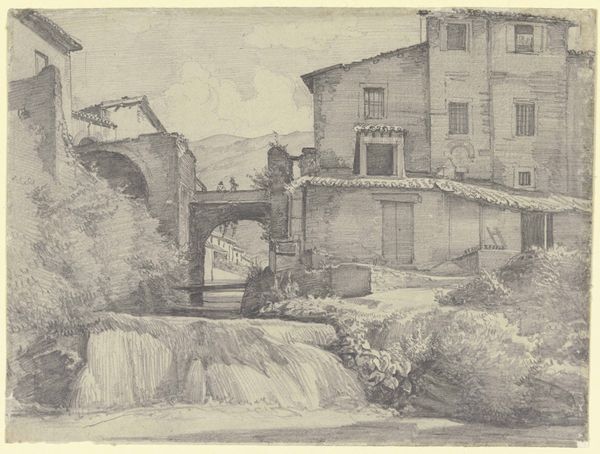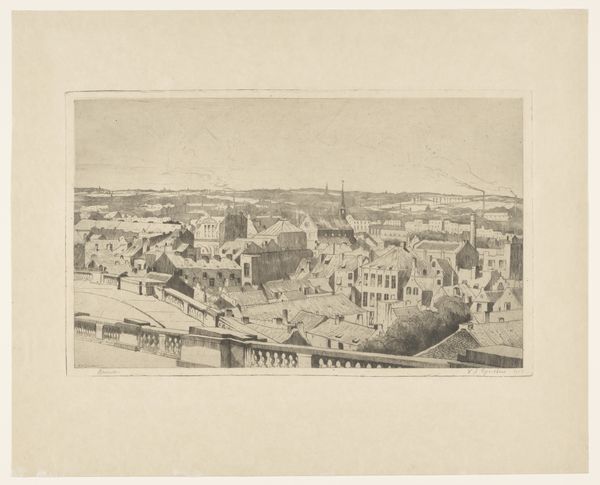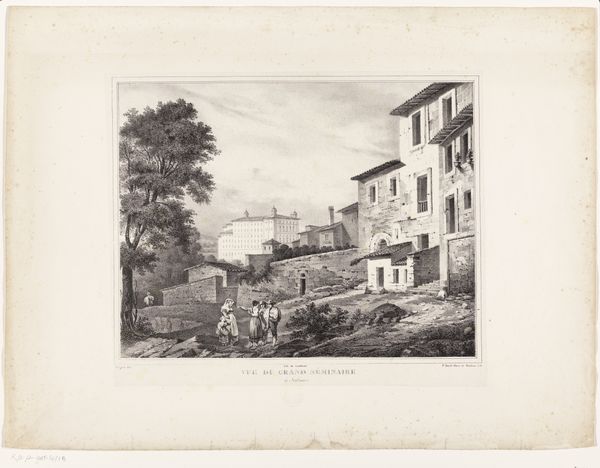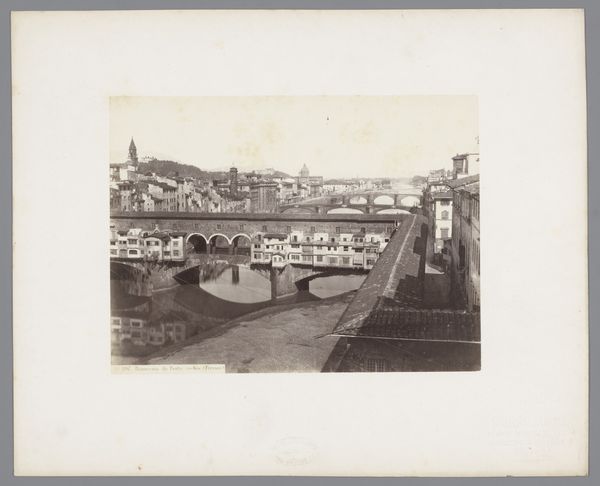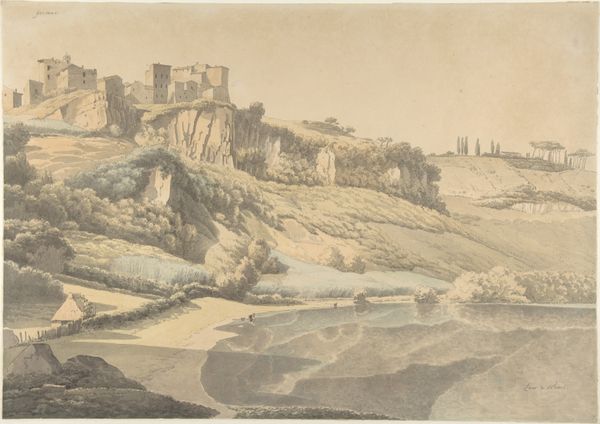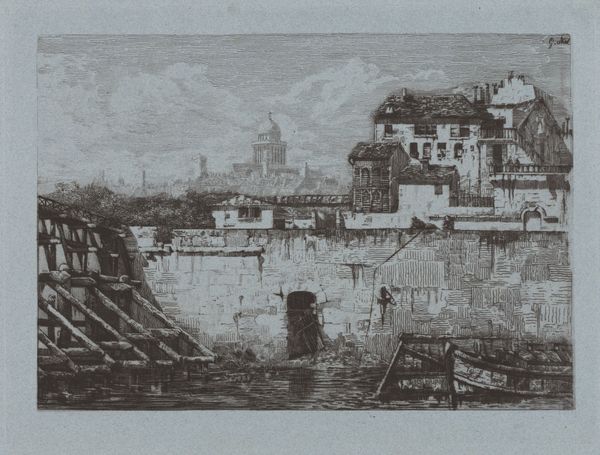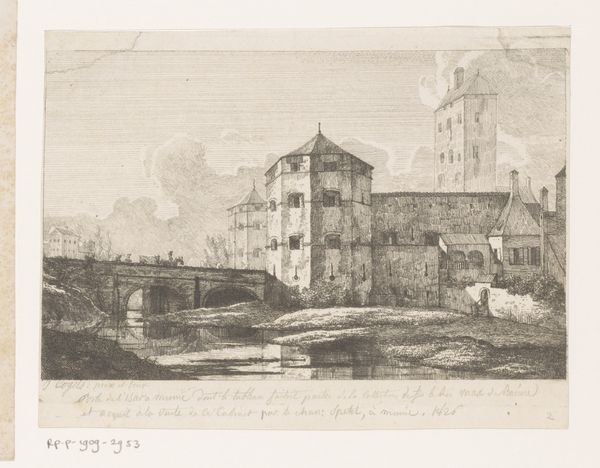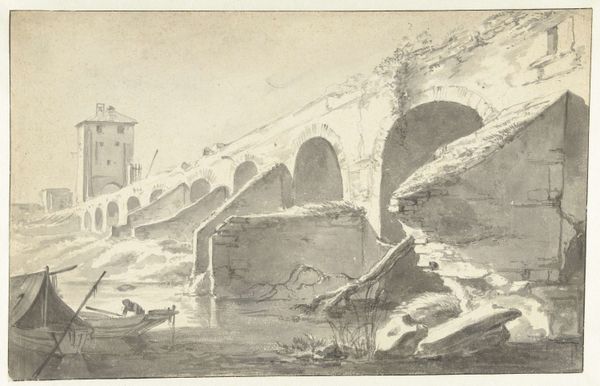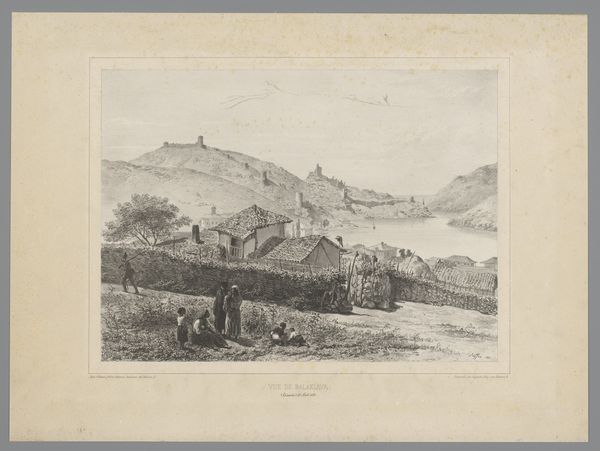
print, engraving
# print
#
landscape
#
historical photography
#
romanticism
#
19th century
#
cityscape
#
engraving
Dimensions: height 352 mm, width 498 mm
Copyright: Rijks Museum: Open Domain
Curator: This is a print entitled "Zicht op het Palazzo Doria in Genua," created by Alphonse Bichebois sometime between 1841 and 1850. It’s an engraving depicting a panoramic cityscape. Editor: My initial impression is one of muted grandeur. The tones are subtle, almost monochromatic, which lends a timeless quality. There’s a striking balance between the architectural precision and the softer, organic forms of the landscape. Curator: Bichebois, as we know, was keenly interested in architectural depiction, meticulously recording urban spaces. Look at the engraving technique itself – the way the lines are used to describe the surfaces of stone, brick, and earth. Think of the artisan skill needed to make this reproduction; this piece gives us insight into 19th-century printmaking’s vital role in distributing images and information. Editor: Indeed. The visual texture is captivating. Consider the way light plays across the Palazzo Doria; there is this marvelous contrast between the shaded areas and the highlights. It emphasizes the building’s volume, adding a sense of depth to the entire composition. Curator: And consider the implied narrative. The people strolling on the bridge, the figures clustered among the stone ruins in the foreground; all were integral to the urban fabric. This engraving documents the consumption and appreciation of space by its citizens and visitors. Editor: Yes, the arrangement of the human figures certainly gives it life. But let's not forget that the strict perspective and the layering of forms draws the eye through space. And how this contributes to a cohesive, visually appealing design that celebrates classical ideals. Curator: It's a fine intersection between Romanticism and the Industrial Revolution, isn't it? This shows how far the materials, production and distribution had come, alongside this desire to return to idyllic classicism. Editor: An important reminder to notice how even documentary-like images adhere to classical compositional principles. It speaks to how integral geometry and proportion were to creating beautiful, enduring visual experiences. Curator: Absolutely. The print not only reproduces a specific location but also makes that scene, and the processes to create it, available to a wider audience. It's a powerful intersection of art, industry, and society. Editor: Examining "Zicht op het Palazzo Doria in Genua," through both form and context gives it a visual appeal that bridges epochs.
Comments
No comments
Be the first to comment and join the conversation on the ultimate creative platform.
